Key Takeaways
- Windows 11 comes with many hidden features in addition to the features of its predecessor.
- The Windows 11 hidden features are hidden in various apps and one needs to explore it.
- The features make users more productive and help save time.
Whether you are a power user or not, getting to know some of the best Windows 11 hidden features will improve your productivity. The relatively new OS came with an array of exciting features, most hidden under cover. The hidden settings would come to light only when users explore the options.
The taskbar, start menu, and Settings app features have changed how your Windows 11 device works. And these little tricks save you time while making you work smart. One can now comfortably work on Windows, be it Windows 11 tablet mode or using a night light in Windows 11. If you have not yet found the features that will help your particular scenario, here is a complete list.
Windows 11 Hidden Features To Improve Productivity
You might be a regular user who just wants the basic features or a multitasker who will be more than happy to get your hands on some of the incredible Windows 11 hidden features. Irrespective of how you work on your device, you must be craving features that will make your work simpler and quicker. Let’s discover the top 20 hidden features that will make your day more fruitful.
1. Voice Typing
Ask us which are the best Windows 11 hidden features, and the voice typing feature will top the list. Sadly, most users are unaware of it, but not anymore, with this informative article. All you have to do is press a keyboard shortcut, and the microphone comes up. The tool is beneficial for those who type a lot.
Place the cursor on a textbox and press the Windows key + H for the voice typing window to appear. Next, tap on the mic button and start talking. Your speech will then be converted into written text. Interestingly, the auto punctuation feature captures even the punctuations when you speak and records them in the text file.

2. The Old Context Menu
If you miss the good old context menu from Windows 10, you will find it as one of the Windows 11 hidden features. It is still there but not visible directly. Right-click on an empty space on your desktop to open the classic menu and select “Show more options”.

There you are! You can see your legacy right-click menu now with the full list of options.

To get to it directly, use the keyboard hotkey Shift + F10. People who are so used to the old one can open it quickly by this method and save time.
3. Shake to Minimize
Having too many windows open at the same time can make you confused. Moving from one to the other to find the right window will take a lot of time. Shake to minimize is a handy feature that lets you minimize all inactive windows by shaking the active window’s title bar.
By default, Shake to minimize is disabled. So you have to enable it before having fun shaking. Note that the feature was previously named Aero Shake.
Use the search tool in Windows 11 to open the Settings menu.

Go to System > Multitasking.
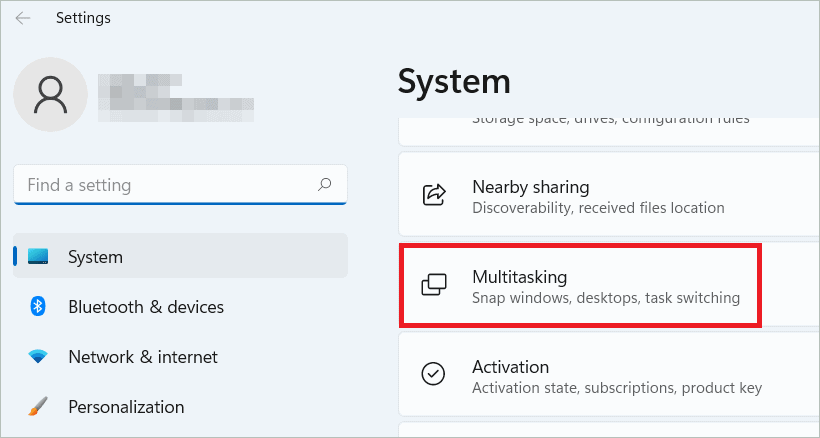
Toggle on the option “Title bar window shake”.

Now, shake the active window; you can see all other open windows minimized.
4. Dynamic Refresh Rate
Dynamic refresh rate is one of those Windows 11 hidden features that give you a better user experience with the OS. If you own a high refresh rate display, Windows can offer smooth transitions while you are working on the device.
The frequency with which your display updates an image is referred to as the refresh rate. For example, if you have a 75Hz refresh rate monitor, it refreshes the image 75 times in a second. So, the higher the refresh rate, the higher the FPS, and the better your experience with the UI elements. Follow the steps to change the dynamic refresh rate in your device using the Advanced display settings.
Open Settings using the search box, select “System” in the left pane, and then “Display” in the right.
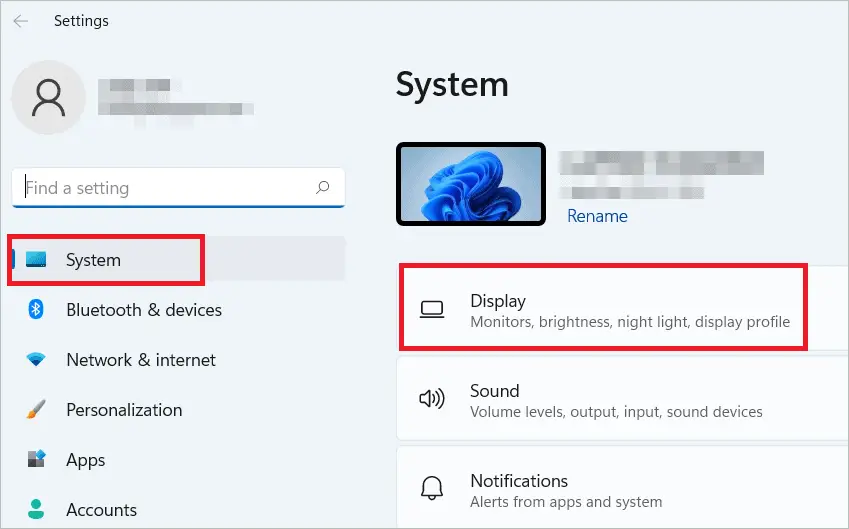
Select “Advanced display” under Related settings.
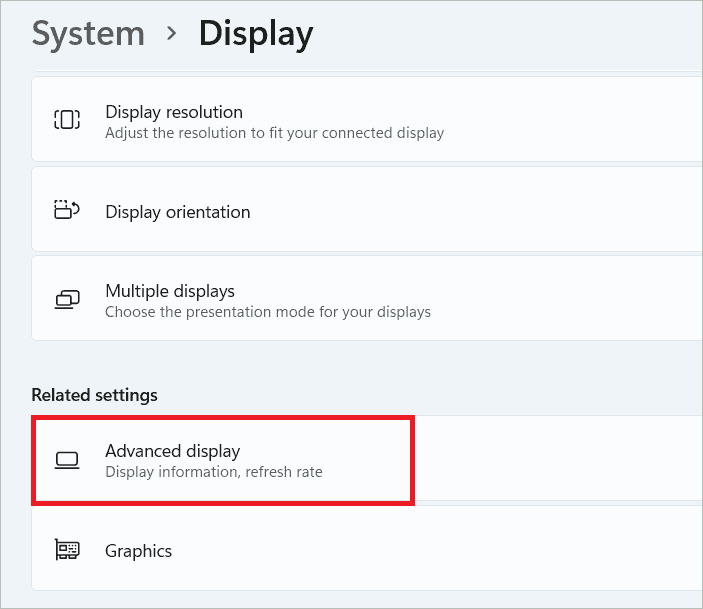
Finally, Select a refresh rate from the Choose a refresh rate drop-down menu.
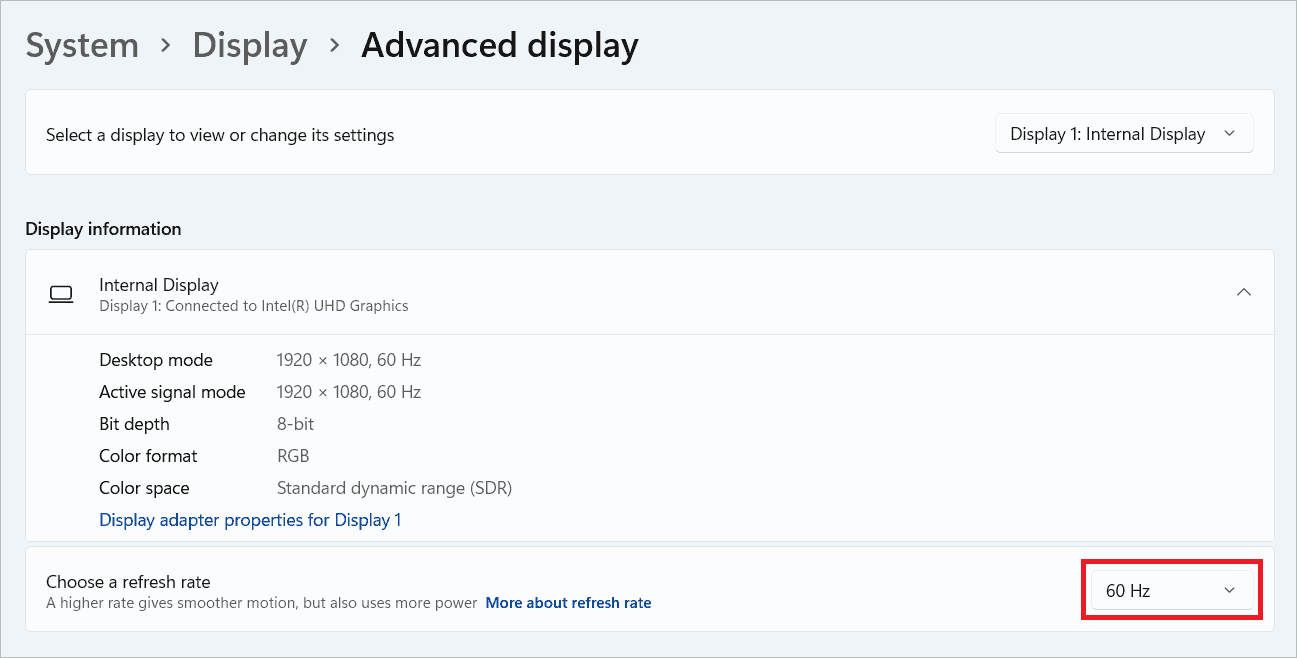
5. Spatial Sound
No one would say a ‘no’ to spatial sound, at least not sound enthusiasts. The immersive audio experience is one-of-a-kind, and you have it as one of the Windows 11 hidden features. Surprisingly, you don’t have to change your audio devices and still enjoy the 3D sound experience by tweaking the audio settings. Here is how you can enable spatial sound on your device.
Press the Windows key + I to open Settings. Select “System” in the left menu and “Sound” in the right.

Select the output device for which you want to enable spatial sound.

Scroll down and locate Spatial sound. Next, select “Windows Sonic for Headphones” in the drop-down menu beside the Type option.
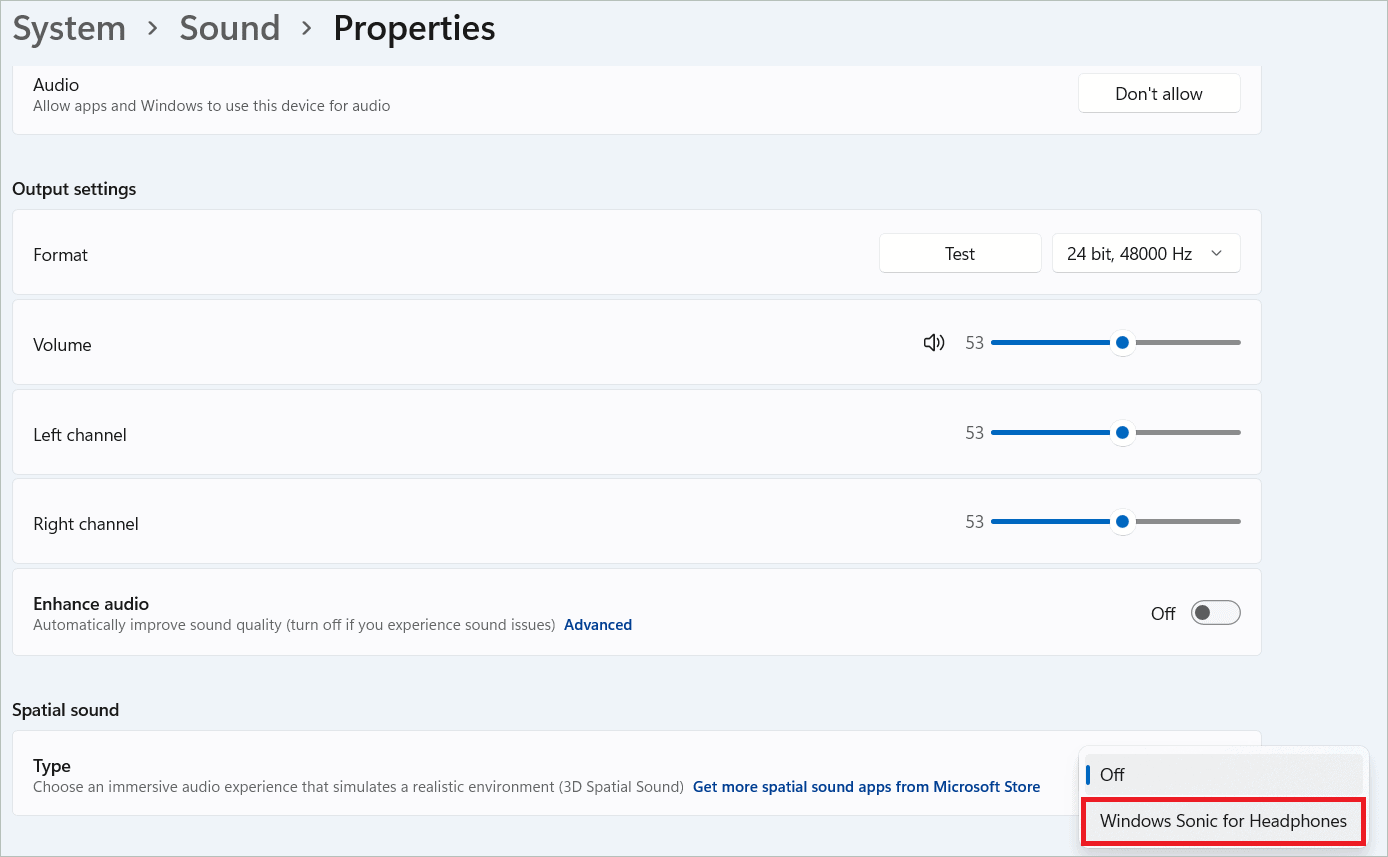
The spatial sound is now enabled.
6. Android App Support
Users in the US can now be happy with one of the best Windows 11 hidden features available to them. The OS now supports Android apps and games. Microsoft and Amazon have held hands to present users with the opportunity to Use Android apps on Windows PC.
You can explore the 1000 and more Android apps available in the Amazon App Store. You can also check out the Google Play store for more app recommendations.
7. Operate Microphone from the Taskbar
If you are using Microsoft Teams with a work or school account, you can turn on/off the microphone from the taskbar. You can directly perform this operation without going to the app, which makes it faster and easier.
You can also use the keyboard shortcut Windows key + Alt + K to mute or unmute the microphone. This is a vital feature to use with Microsoft Teams while on video calls. Hopefully, in the future, this feature lets you turn on/off the microphone for other apps as well from the taskbar.
8. Weather Widget
Some may not consider the weather widget as one of the Windows 11 hidden features as it is right there on the desktop. But it is not easily visible, being tucked in the bottom-left corner. It gives real-time weather data of your location. Clicking on it expands the widget to provide a detailed view.
If the taskbar alignment is to the left, the widget will not be shown. You have to go to the settings app to make it visible.
Open Settings, select “Personalization” in the left pane, and then “Taskbar” in the right.
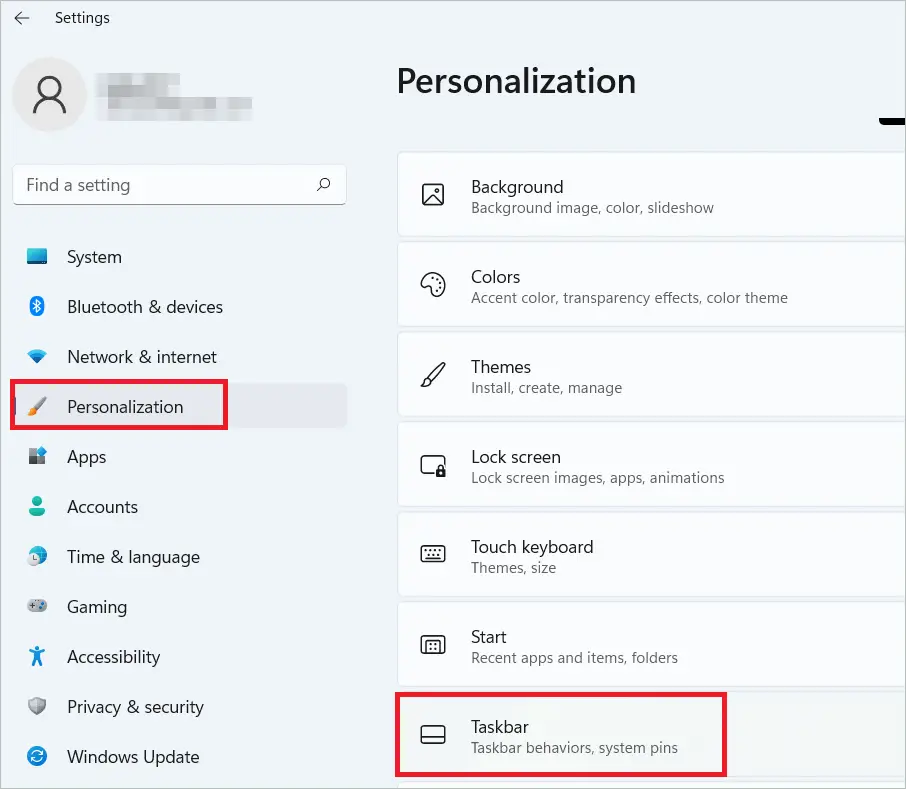
Toggle on Widgets to make the weather widget visible.
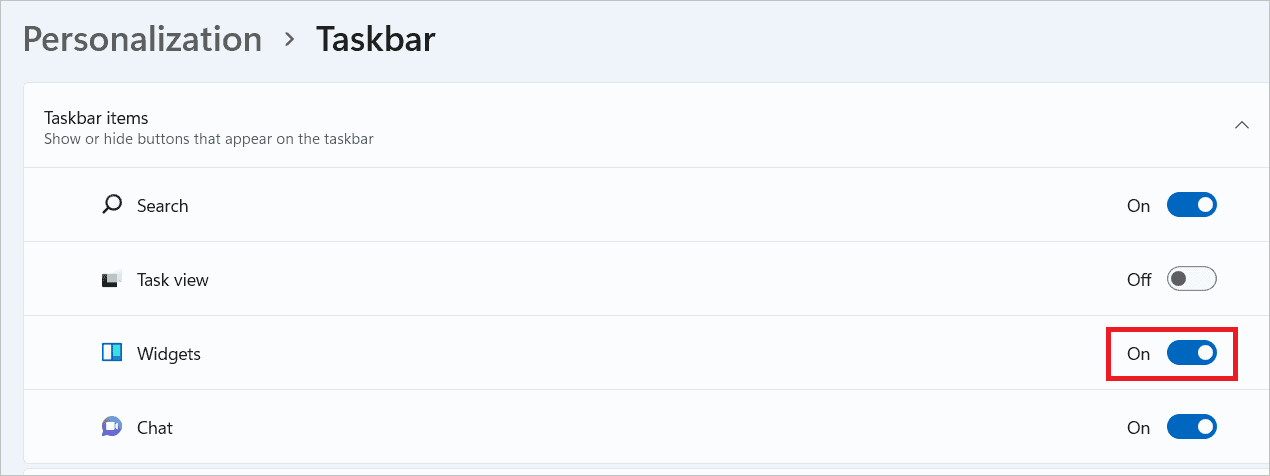
9. Add Folders to Start Menu
It would be nice if you could add folders to the Start menu for easy access, right? Well, adding folders to the Start menu is one of the Windows 11 hidden features that many fail to notice. This is an excellent move from the developers to let users quickly access their downloads and other files.
That said, you cannot add your custom folders to the menu yet. As of now, you can add File Explorer, Downloads folder and a few more dictated by the OS. Here are the steps for the same.
Open Settings, select “Personalization” in the left pane, and then “Start” in the right.

Next, select “Folders.”

Here you will see a list of folders that can be added to the Start menu. Toggle on the folders that you want to add.

10. Volume Mixer for Individual Apps
Sometimes, you prefer different volume levels for different apps, and here comes the importance of the volume mixer. Volume mixer is again one of the Windows 11 hidden features that remains in the dark if not explicitly searched for. Opening the mixer as in the previous version, gives you the option to change the app volume level. Let us see how.
Open Settings, select “System” in the left panel, and then “Sound” in the right.

Scroll down and select “Volume mixer” under Advanced.

Here, you will see the applications listed under Apps. Slide the volume slider to change the sound level of the desired app.

11. Focus session
Focus sessions give you focus by removing the annoying notifications, but it comes under the hidden features of Windows 11. The feature is introduced as part of the Clock app that comes with a timer, alarm clock, and many more clock settings. So if you are always on time and want to add productivity to your hours, the Focus session is for you.
You can integrate the feature with your Microsoft account to list all your tasks. You can track your daily progress, turn off app alerts and notifications, and even get notified to take a short break. Sign into your Spotify account to add some great music while working.

12. Check Battery Usage
One of the most useful Windows 11 hidden features is Settings’s Power & battery section. It lets you view the battery levels for the last 24 hours, the screen on time, sleep time, and screen off time.
The battery usage per app section lets you identify the apps that drain your battery juice. Here, you can see the background apps that use battery power and are detrimental to the battery life. You can manage these apps to save battery.
Open Settings, select “System” in the left panel, and then “Power & battery” in the right.

Expand the Battery saver under Battery and make the required changes.
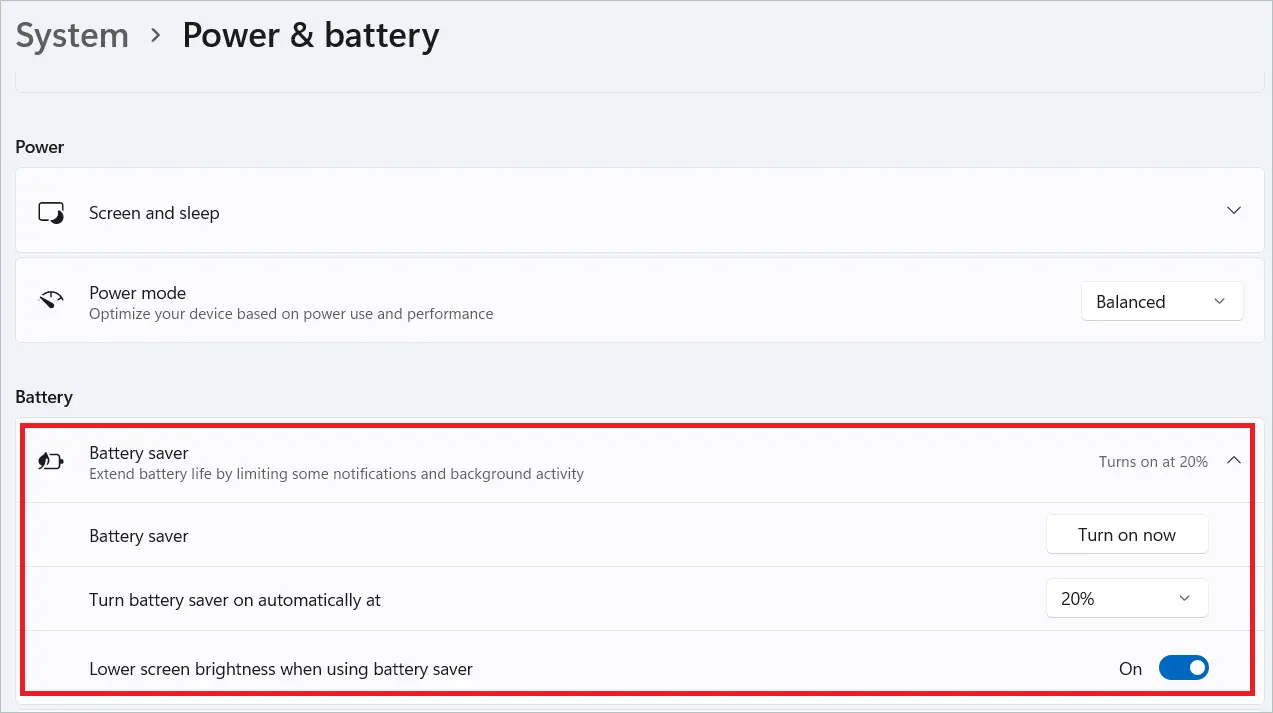
Note: You can also go to the app settings page and change the background apps permissions to decide how the apps should run in the background.
13. Easy Share Screen
There are some Windows 11 hidden features that Microsoft offers Teams users, and screen sharing is one among them. This feature is available only for school and work accounts, though. While on video calls, you can hover over an open window in the taskbar and select “Share this window.” The window is instantly shared, and the participants can view it.
14. Emoji Panel
The emoji panel is a powerful feature, but many users don’t know it exists. Of course, we associate emojis with messaging apps, but Windows 11 has its own emoji keyboard with new and exciting emojis, kaomoji, GIFs, and symbols.
Whether you want to use the emojis while having a hearty chat in messaging apps or simply want to add them to your documents, the panel is all yours. Press the Windows key + . to open the emoji keyboard and click on the ones you want to use.

15. Advanced Gesture Controls
Gesture controls are the Windows 11 hidden features for devices that have touch keyboards. Using 4-finger gestures in addition to 3-finger gestures is an excellent way to enhance your productivity by getting tasks done faster.
You can customize these gesture controls the way you want. Use them for things you need to do regularly, like opening the Notification Center. Given here are the steps to go to gesture controls.
Open Settings, select “Bluetooth & settings” in the left menu, and then “Touchpad” in the right.

In the next window, select “Advanced gestures.” Here, you can change the settings as needed.
16. Snap Windows
Snap windows is a multitasking feature that allows you to arrange the open windows neatly across the screen. You can use the keyboard, mouse, or the Snap Assist feature for this. Hover your cursor over the maximize button of any of the windows to view the snap layouts.

Select one, and the particular window takes a position as selected by you. Likewise, you can decide where to place the other windows to improve productivity while multitasking.
17. Keyboard Shortcuts for Taskbar Items
How are keyboard shortcuts for taskbar items part of Windows 11 hidden features? They are because most people have no clue about them, and they entirely depend on how your taskbar is arranged. The feature is convenient when you have to open a taskbar shortcut quickly.
All you have to do is press the Windows key and the corresponding number of the taskbar item. For example, if your taskbar has the items File Explorer, Chrome browser, and Calculator, Press Windows key + 1 to open File Explorer, Windows key + 2 to open Chrome browser, and so on. Note that you cannot open the widget and the Start menu using shortcuts.
18. Taskbar Alignment
When Windows 11 was launched, the center alignment of the taskbar was a new sight. However, even though this is a new experience, some users want to stick to the old alignment. For those users, here are the steps to change the alignment.
Open Settings, select “Personalization” in the left menu, and then“Taskbar” in the right.
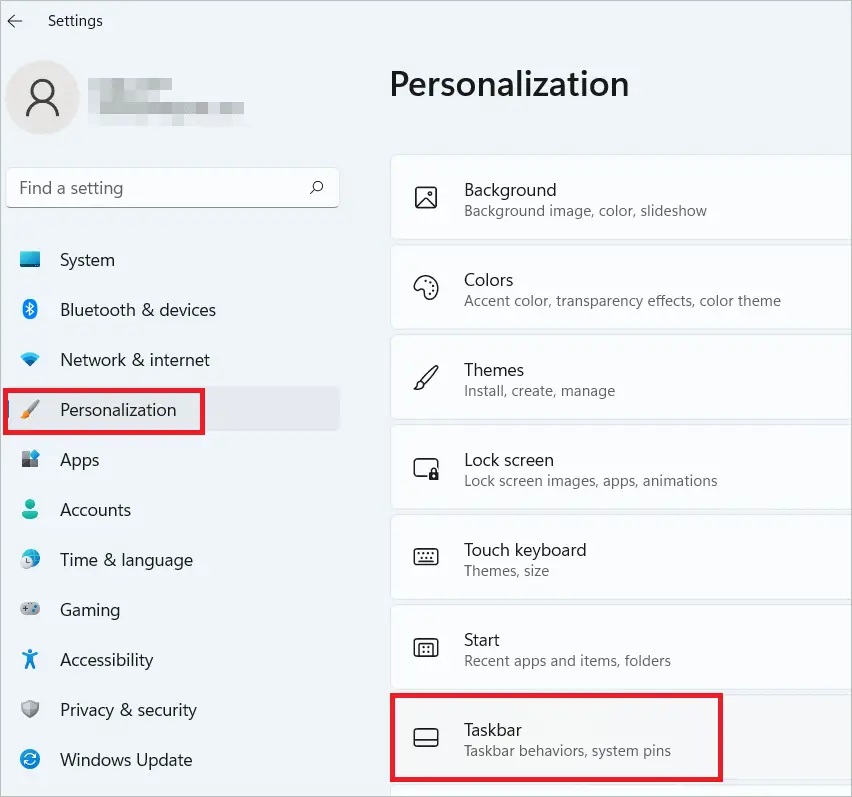
Go to Taskbar behaviors and select “Left” in the dropdown menu near Taskbar alignment.

19. Clipboard Sync
The awesome clipboard syncing feature comes about as one of the best Windows 11 hidden features, much to the delight of mobile device users. With this feature, the clipboard is synced between Windows and Android devices.
The clipboard synchronization feature lets you copy the text on the clipboard in a computer and paste it onto an Android device. You can also do it the other way around. As the clipboard feature works across all your devices, you can log in from anywhere and start working.
Open Settings, select “System” in the left navigation pane, and then “Clipboard” in the right.

Here, you will see an option to share across devices that enable clipboard syncing.

20. Windows Backup
Windows 11 offers an integrated backup option in the form of OneDrive. You can use your Microsoft account credentials to log in to Microsoft’s cloud platform. All your data from the user profile, preferences and more will then be uploaded to OneDrive. Then, as the data is synced across devices you use, you can access them from any device by signing in.
Remember that the solution differs from Windows Backup and Restore and File History, which you must be familiar with. Here are the steps to go to the backup settings.
Open Settings, select “Accounts” on the left side, and then “Windows backup” on the right.
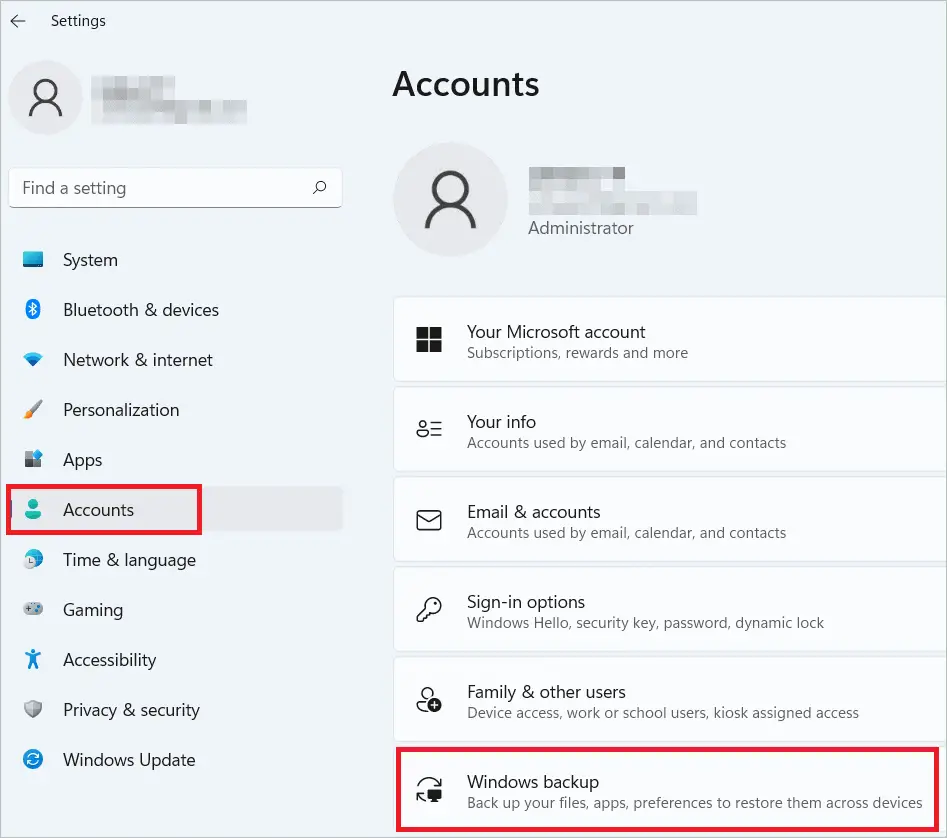
Here you will see the OneDrive folder syncing option that lets you start syncing.

Final Thoughts
Did you enjoy the Windows 11 hidden features that are not visible at first glance? If you did, let us tell you that more features like the taskbar overflow are on their way. These will be available with the Windows 11 22H2 release. For now, you can keep experimenting with the above-mentioned hidden features.
Many features are listed in the article, and many are accessible through the Settings app. Some of them are shortcuts, and some let you multitask efficiently!







